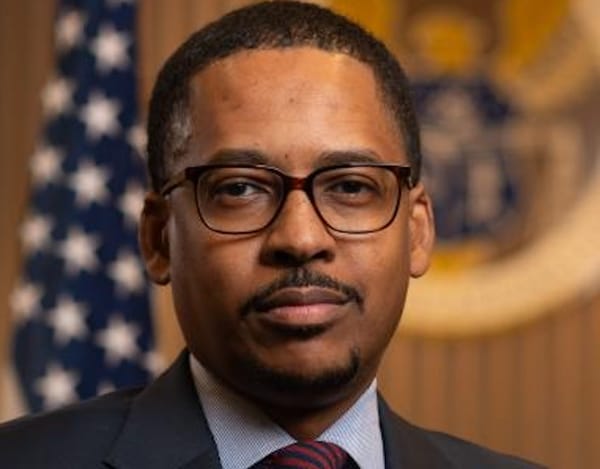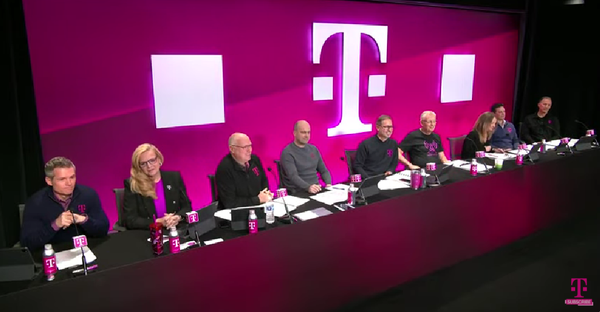Low Power Broadcasters Highlight Diversity in Call for Cable Carriage; Lawmakers Praise Local Focus
WASHINGTON, February 24, 2009 – As Congress examines renewing legislation that mandates satellite carriage of over-the-air broadcasts, owners of low power television stations say record levels of cable and satellite subscribership necessitate their inclusion in any retransmission consent regime to p
WASHINGTON, February 24, 2009 – As Congress examines renewing legislation that mandates satellite carriage of over-the-air broadcasts, owners of low power television stations say record levels of cable and satellite subscribership necessitate their inclusion in any retransmission consent regime to promote public safety, ensure a supply of local programming and promote ownership diversity.
Eighty-five percent of Americans recieve television programming by way of cable or satellite, Community Broadcasters Association president Kyle Reeves told President Obama in a letter sent to the White House last weekend. Many young people have never seen a pair of rabbit ears, Reeves wrote. Instead, they increasingly choose to access video programming over broadband, cable, or satellite connections.
Reeves said this change means public interest groups that fought against allowing one entity to own multiple television stations in a market picked the wrong battle.”The true issue that impacts the diversity of ideas available to the public…is access to distribution systems,” he said.
Local programming and low power television were both matters of great concern to some members of the House Energy and Commerce subcommittee on Communications, Technology and the Internet at a Tuesday hearing on the Satellite Home Viewer Extension and Reauthorization Act. Reps. Marsha Blackburn, R-Tenn., and Charles Marancon, D-La., both discussed the importance of local television in communicating with the public during natural disasters and chided satellite providers for not providing enough local programming to their districts.
Marancon was particularly critical of satellite television executives for their actions in the aftermath of Hurricane Katrina. While a low power station owner had to fashion a makeshift antenna to broadcast information on whether or not it was safe for residents to come home, satellite providers advertised packages carrying “all stations” – but not low power.
Blackburn worried that the method by which satellite providers choose which local stations to carry – a system based on Nielsen Designated Market Areas (DMAs) – often leaves viewers watching stations based in other cities. Those stations don’t always carry accurate emergency information, such as tornado warnings, Blackburn said.
And Rep. Greg Walden, R-Ore., once a broadcast station owner himself, said he strongly supported the local mission of low power stations. Walden said the fate of the stations — which are largely denied cable and satellite carriage — is a topic important enough to warrant its own hearing.
Satellite providers haven’t lived up to promises to bring more local programming to all 210 DMAs, an angry Rep. Bart Stupak, D-Mich., pointed out. As he flipped through documents DirecTV provided to the Federal Communications Commission during its purchase by News Corporation, Stupak reminded DirecTV vice president Bob Gabrielli of his company’s promise to deliver all four local television stations to his district. “None [of these promises] seem to get fulfilled,” he observed.
When Gabrielli tried to deflect blame onto News Corporation, Stupak reacted angrily: “You promised [full coverage] by the end of 2008 — why didn’t you do it?”
Rep. Diana DeGette, D-Colo., wondered about how much “local” programming was actually aired on local stations. DISH Network president Charles Ergan said the percentage was around 30 percent while Gabrielli said it was probably half that. Both blamed the practice of “rebroadcasting” content produced for television networks for the dearth of true local programming.
Public Knowledge president Gigi Sohn suggested that any reauthorization bill should give cable and satellite television providers a single, “unified regulatory structure” for obtaining permission to carry television programming into local markets. Nor should they pay different copyright royalty rates, she said. And Internet video services could be included in the unified system without a problem, Sohn added.
And while satellite executives professed eagerness to drop full power stations that don’t produce local content, the word “local” could have a meaningless definition if the FCC rules governing low power stations are extended to full power stations, CBA counsel Peter Tannenwald warned.
The FCC defines “local” content as being created within a station’s broadcast service area. Tannenwald pointed out that in some states, a live interview of the governor filmed at the state capital would not qualify as local programming. The FCC would have to “fix” the definition in a manner “contrary to market forces,” Tannenwald said.
Still, “diversity of every kind is the hallmark of [low power stations],” Reeves said. The CBA plans to prove his point Wednesday afternoon with the release of a survey showing the diversity in programming and ownership among low power television station owners. Tannenwald said the survey was commissioned in response to FCC demands for data to back up CBA’s longstanding claims regarding ownership diversity and localism.
Thirty-four percent of low power stations offer some kind of foreign language programming, the survey reports. Of those stations, 78 percent broadcast more than ten hours per week in foreign languages. And many of those stations broadcast entirely non-English language programming.
Local programming is a mainstay of low power TV, with 83 percent of stations airing some kind of locally-oriented shows. Of that 83 percent, nearly half air more than 10 hours of local programming per week, consisting of a broad cross-section featuring news, general entertainment and political programming.
But 62 percent of those stations lack the cable or satellite carriage required to reach most Americans, the CBA survey revealed.
However, as cable systems transition to switched digital systems, future capacity would be “virtually limitless,” Reeves said. “Carriage of our stations will no longer impair any right or ability of anyone else to speak or be heard.”
President Obama should “exhort the FCC and Congress to make [low power TV] part of the television mainstream,” Reeves said. “A hand reached out to us will be a hand reached out to an industry that exists to serve the public, with minority ownership, owner participation in operations, and significant amounts of local and foreign language programming.”
When asked about carrying more low power stations during an interview Wednesday, Gabrielli said that while DirecTV does carry a number of low power local stations, the company would “love to make marketing decisions based on what consumers want.” But DirecTV is bound to carry many full power broadcasters under must-carry rules, he said.
Susan Eid, senior vice president for government affairs at DirecTV told us DirecTV was aware that must-carry stations carry “significantly less” content than low power stations. Some stations spend much of their weekend airtime on infomercials, she said, calling them a “colossal waste of spectrum.” Gabrielli agreed that low power stations have “truly unique content” that deserves carriage. A change in must-carry rules to further define local programming would “give them a seat on the bus,” he said.
But National Association of Broadcasters CEO David Rehr said while low power television plays “an important role” and wished that they could participate in the hearings, he flatly denied DirecTV’s assertions about local program. “[Eid’s statements] are simply not the case,” he said.
“Local broadcasters are doing local news…weather…and sports…[Eid’s argument] is just a non-starter as far as I’m concerned,” he said. Rehr said the reason low power stations don’t get carriage because they are “distinct entities” with a different place in the market as defined by FCC rules.
But NCTA CEO Kyle McSlarrow said must-carry is unconstitutional and programming should be a choice left between the provider and consumer. But if we are to have must-carry, McSlarrow agreed there should be a “compelling public policy rationale” as to why a station is considered must-carry. A low power station with more local content would deserve carriage more than a full power station that just goes through the motions – a “legitimate distinction,” McSlarrow said.
McSlarrow said that over time the must-carry rules would be obsolete as NCTA members go digital, freeing up capacity and moving to a switch network. “If we have that kind of capacity to offer…choice to consumers, we’re going to want to do that anyway.”
But McSlarrow said that NCTA was currently focused on using new capacity for faster broadband networks. In such a scenario, online video distribution could eliminate the need for stations to demand carriage.
But being able to offer consumers more programming is still “an imperative,” he said. “With more capacity…our [offerings] will empass greater numbers of diverse programming.” And cable operators will respond to market pressures, he predicted. “If I were a cable operator…I’d want to cover the base for every possible niche…there is no question about it.”








